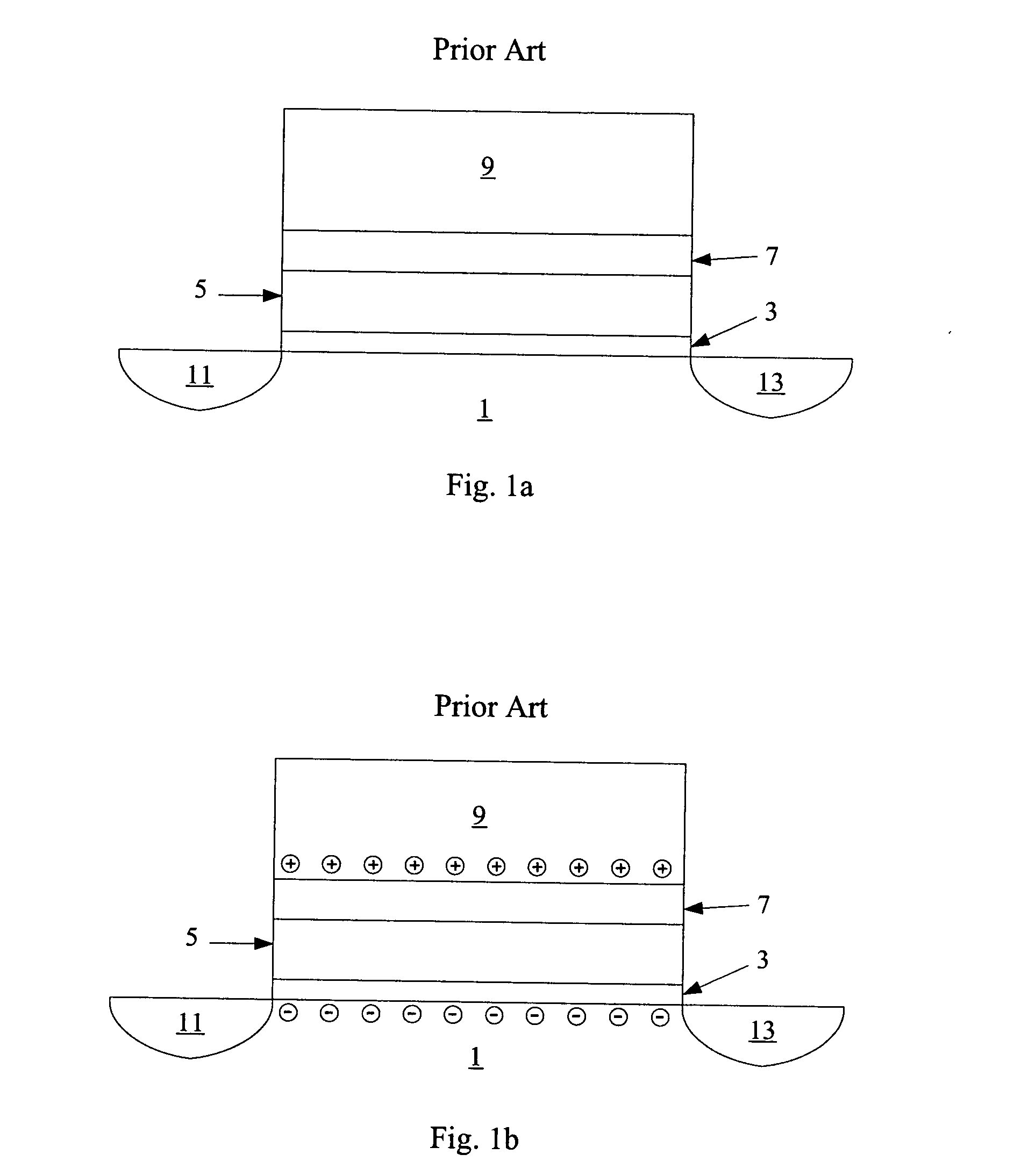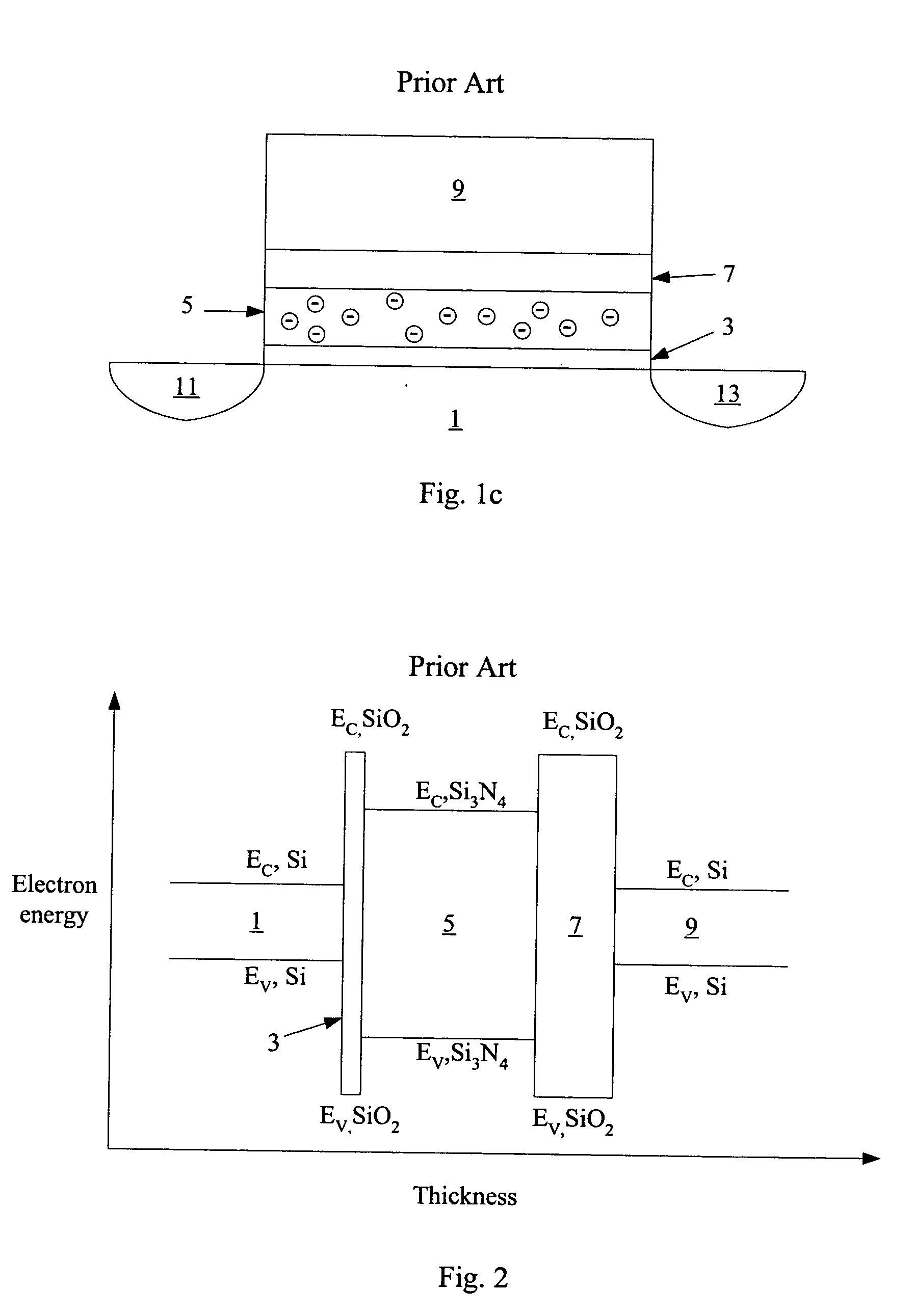Storage layer optimization of a nonvolatile memory device
a storage layer optimization and nonvolatile technology, applied in the direction of basic electric elements, semiconductor devices, electrical equipment, etc., can solve the problem that the stored charge tends to be lost from the cell, and achieve the effect of improving the retention of charg
- Summary
- Abstract
- Description
- Claims
- Application Information
AI Technical Summary
Benefits of technology
Problems solved by technology
Method used
Image
Examples
Embodiment Construction
[0021] The present invention is an improved nonvolatile charge-storage memory cell related to a traditional SONOS device. A SONOS device, as shown in FIG. 1a, is a field effect transistor that operates as a nonvolatile memory cell by storing charge. A typical SONOS device is formed on a substrate 1 (conventionally a monocrystalline silicon wafer), upon which is formed a tunneling oxide 3 (normally silicon dioxide), a charge storage layer 5 (normally silicon nitride), a blocking oxide 7 (normally silicon dioxide), and a gate electrode 9 (typically of polycrystalline silicon, herein called polysilicon.) The silicon-oxide-nitride-oxide-silicon stack of substrate 1, tunneling oxide 3, charge storage layer 5, blocking oxide 7, and gate electrode 9 gives the SONOS device its name. Source region 11 and drain region 13 are formed in the substrate, for example by ion implantation.
[0022] Turning to FIG. 1b, in normal operation of, for example, a NMOS device, a positive charge is applied to g...
PUM
| Property | Measurement | Unit |
|---|---|---|
| dielectric constant | aaaaa | aaaaa |
| thick | aaaaa | aaaaa |
| thick | aaaaa | aaaaa |
Abstract
Description
Claims
Application Information
 Login to View More
Login to View More - R&D
- Intellectual Property
- Life Sciences
- Materials
- Tech Scout
- Unparalleled Data Quality
- Higher Quality Content
- 60% Fewer Hallucinations
Browse by: Latest US Patents, China's latest patents, Technical Efficacy Thesaurus, Application Domain, Technology Topic, Popular Technical Reports.
© 2025 PatSnap. All rights reserved.Legal|Privacy policy|Modern Slavery Act Transparency Statement|Sitemap|About US| Contact US: help@patsnap.com



